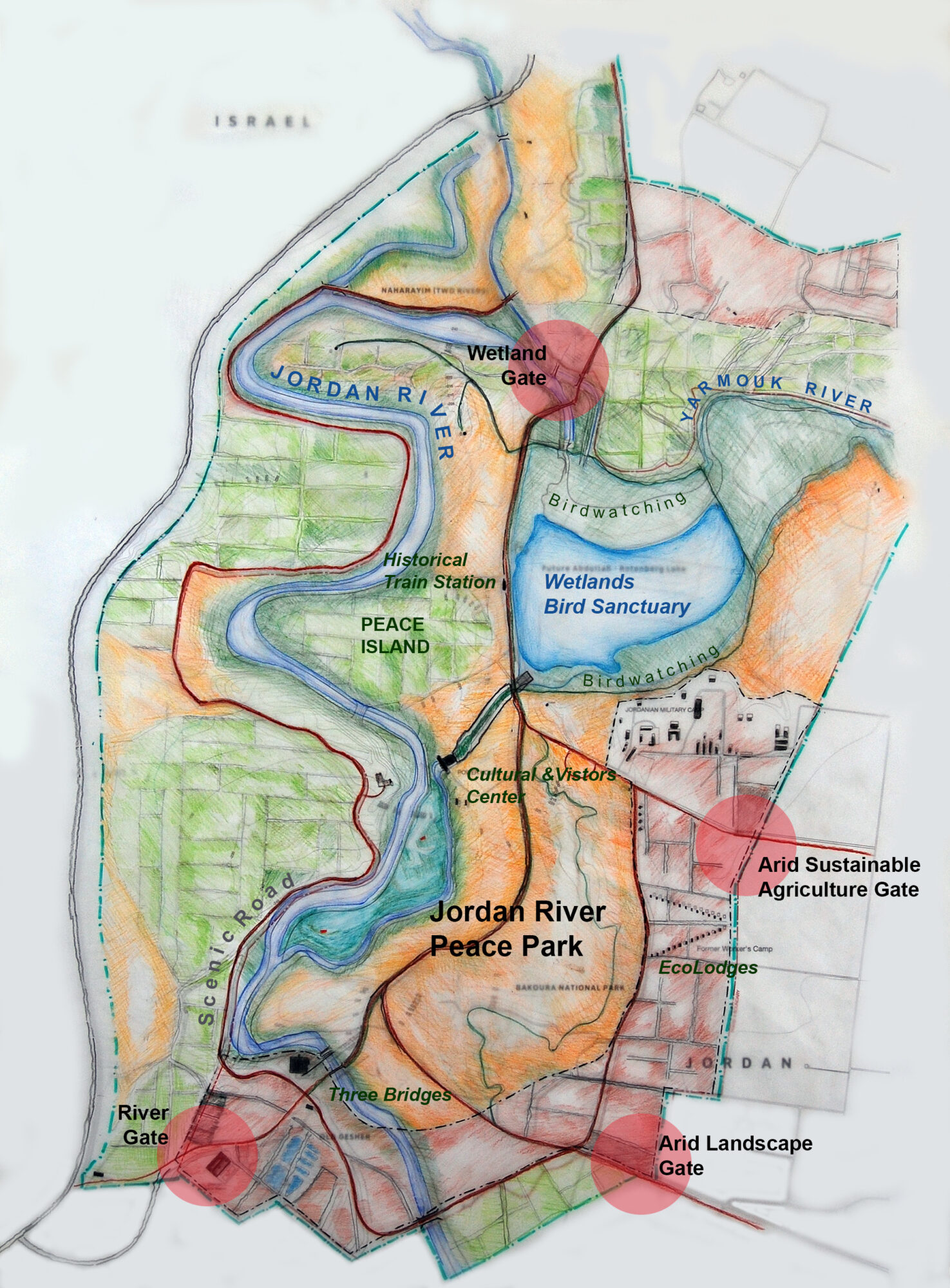Jordan River Peace Park
The transboundary peace park is located on two sides of the Lower Jordan River that will be accessible to visitors from both Israel and Jordan. With no requirement for passports and visas people will be able to peacefully meet and interact. Protected areas on both river banks will provide opportunities for ensuring biodiversity, cooperative management, joint research programs, education, and ecotourism cooperation. The proposed park will encompass 800 hectares (2000 acres) of Israeli and Jordanian land.


